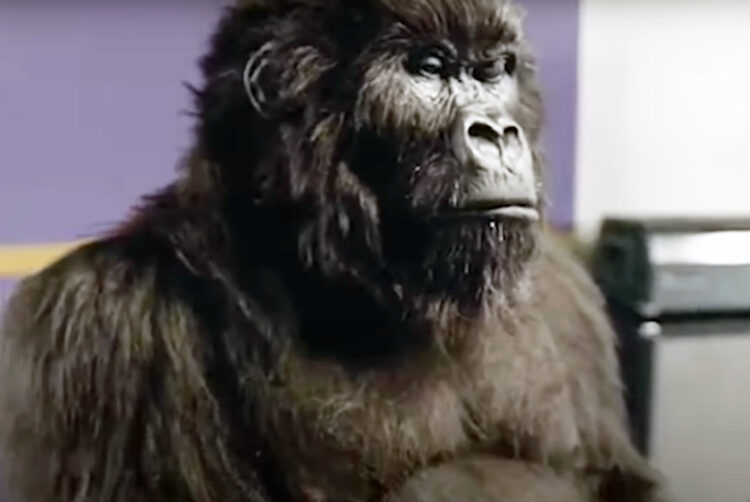Opinion
In our march towards greater targeting and fragmentation, we’ve forgotten how to make famous ad campaigns. But this isn’t a plea for a return to the past.
Last month, I was fortunate to attend Adwanted and The Media Leader‘s The Future of Brands and The Future of Audio and Entertainment events at City Hall.
The former headquarters of 1980s firebrand Ken Livingstone has rebranded as a swish, modern conference centre replete with private members’ club stylings. An appropriate setting for events focused on the future of our industry.
But if you will indulge the metaphorical headline, parts of the building were redolent of a municipal office from the days of Marty McFly, the Greater London Council and Red Wedge. A visual reminder that while all around is change, some fundamentals remain the same.
Where are the ideas?
Beyond data and tech, the biggest change in the last few years is the increasing invisibility of advertising campaigns in the industry. The power of a big idea and great ads endures but is increasingly rare.
As a newly minted consultant with no axe to grind and no fixed agenda, I allowed the waves of conference content to wash over me. The focus was on data, technology and measurement — and I don’t think that was just the sessions I chose.
I was left hankering for ideas, creativity and some levity. These were in altogether shorter supply.
Back in newt-fancier Ken’s time, it was all about the ideas, the work, the ads.
I am of the generation of media planners who sat waiting vainly for our five minutes in the spotlight at the end of client meetings, while intense debate was had about whether the client logo should appear on the left or right of the copy and whether puffypuff or comicon was the most impactful font.
This approach gave the world the Guinness surfer, Economist posters and drumming gorillas.
More targeting and fragmentation
An industry conference without the ads and the ideas front and centre was unthinkable. It was what our mates and parents thought we did and we didn’t disabuse them about our actual role in making these ads famous.
In a session entitled “Ask me anything”, I sheepishly asked the panel: “What is your favourite current ad campaign?”
Why my reticence? Because if we are being honest, most of us need to rack our brains to spontaneously recall a current ad campaign — let alone one we like.
Some embarrassed chuckles in the room suggested a collective recognition that recalling our favourite ads is far harder than it should be.
The panel offered up the current British Airways outdoor campaign — strong work, but I sense as much a success story for the PR industry as the ad industry.
The exchange illustrates the challenge our industry faces in the unstoppable march towards greater and greater targeting and fragmentation.
The virtues of fame
In an interview with Jon Evans on the Uncensored CMO podcast last year, Ad Contrarian Bob Hoffman addressed this issue head on, calling for marketers to re-emphasise creativity in advertising as a priority and extolling the virtues of fame.
It is surely uncontentious to argue that the industry needs to focus on making famous ad campaigns again.
But this cannot be a plea for a return to the past. The centre break of Coronation Street and the special build on Cromwell Road will not ride to the rescue of the famous ad campaigns of the future.
Future famous campaigns are likely to use multiple channels, to be targeted and personalised for niche groups who consume alone or while multitasking. To have different formats and executions by platform and even by host brand. What works on TikTok probably won’t work on YouTube and certainly not on ITVX.
If we are to start creating genuinely famous ad campaigns again, they will need a big idea. And it will probably be tied together with ingredients like taglines, catchphrases, logos, sonics, jingles and mnemonics to make a sum greater than the parts.
New generation of disruptors
One of the glories of our industry is that there is always a new generation coming along to disrupt and refresh the ecosystem. If this putative group start with the sole ambition of creating famous campaigns, they have a suite of tools and a historic archive at their disposal that are the envy of previous generations to help them achieve this.
Here is hoping that, as I type, a motley crew of art-school alumni, university grads, entrepreneurs, wheeler dealers and industry apprentices from diverse backgrounds outside our traditional talent pool are plotting to make famous ad campaigns above all else.
How will we know if they have achieved this?
We won’t need any sophisticated mixed market modelling or brand tracking. We will all just be able to answer a simple question: what is your favourite current ad campaign?
 Simon Redican is a consultant and commentator on the media and advertising industry. He was previously CEO of Pamco
Simon Redican is a consultant and commentator on the media and advertising industry. He was previously CEO of Pamco






 Simon Redican is a consultant and commentator on the media and advertising industry. He was previously CEO of Pamco
Simon Redican is a consultant and commentator on the media and advertising industry. He was previously CEO of Pamco